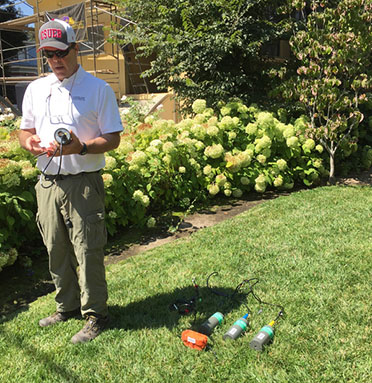Fault Lines
- BY NATALIE FEULNER
- September 1, 2016

COURTESY OF U.S. GEOLOGICAL SURVEY
Late last month — just one week before the second anniversary of the devastating 2014 Napa earthquake — Cal State East Bay senior Jennie Bahramian and Professor Luther Strayer were busy demonstrating how they planned to set off tiny “earthquakes” — tremors so small they could only be felt within a few feet of their “epicenter.”
The experiment, being done in conjunction with the U.S. Geological Survey, will help characterize and map the underground geology around the Napa and Hayward faults. The maps will show geologists how the ground responds to earthquake shaking in different neighborhoods along Bay Area faults, including the Chabot and Hayward faults that run through the CSUEB campus.
“We don’t yet understand what earthquakes do once they go underground, how these faults connect, the complexity of the area … these faults are so close together, they’re very likely linked,” Strayer said.
Bahramian used to be afraid of earthquakes. Growing up in Iran and attending high school in Kathmandu, Nepal, she only ever heard about quakes or saw the destruction after they had occurred, and it was always terrifying.
That is, until she started learning more about them and about what scientists are doing to prepare communities like Hayward for the next, inevitable shake.
“An earthquake by itself is not bad, it’s the building that gets destroyed and kills people,” Bahramian said. “If you can understand it … you can take safety measures and be prepared.”
Strayer said the work Bahramian and other students are doing gives them hands-on experience that will help them find permanent employment after graduation.
“Some of the research we do is inaccessible to the students because of its complexity, but the other work we do is local and related to the field, allowing our students to get into the field and become experts in the local geology,” he said.